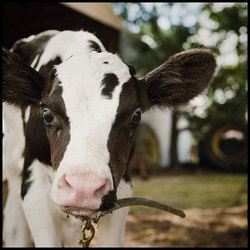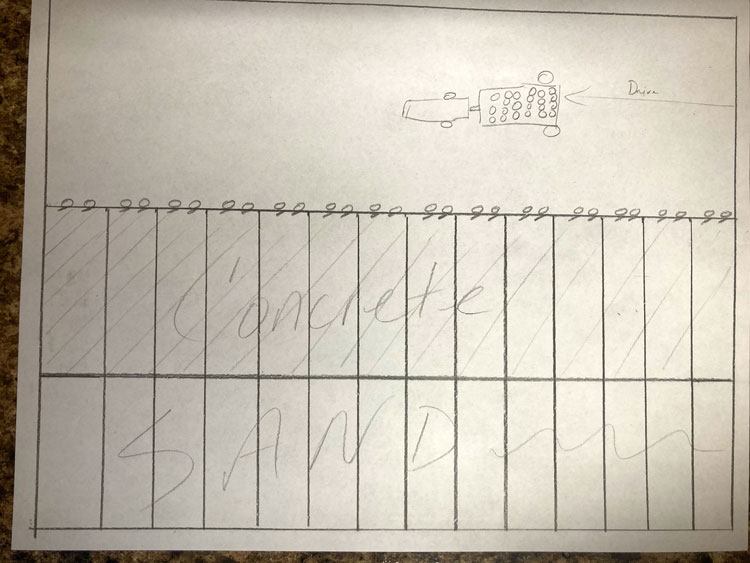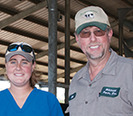
- Visit farms that are doing what we might desire. This lets us see how it works for them, how they compare to us, and what benefits it might bring to the table for us.
- Research, research, research! We look for statistics, costs, efficiency, health benefits, and so on.
- Conversations between our family members. This one is very important. We want everyone that a change like this would affect to know our thoughts. We also want to pull in their thoughts and, ultimately, brainstorm between everyone to come to the best conclusion.
We want to take our calves out of the hutches, which are a good ride across the farm, and bring them closer to the back side of our old parlor. There is an old covered holding lot with concrete that we think would work well for calves.
We have been reading up on grouping calves from the start. We would like to explore how the calves do with two calves to a pen. Each pen would have a sand pad in the back and the front half of the pen would be grooved concrete. At the front of the pen there will be calf headlocks.

The benefits that we are reading about is that they tend to do better and grow better with a roommate. Putting them closer to the main facilities also gives us a chance to have eyes on them more often. We normally have someone feeding them, checking them, and rewatering them three times a day, but if they were closer, we could check on them more frequently.
They are currently housed in a long row of hutches across the farm. We have a utility vehicle with a trailer on the back that holds a 55-gallon drum of water. The calf feeder has to make several trips back to the main facilities to fill up that drum to give all the calves water. This takes a lot of time. With them all under one cover and close to the main part of the farm, it would be a lot easier to just walk around with a water hose and have feed right there available. Also, the calves would be less than 50 feet away from the “calf room,” where we mix milk and hold calf health supplies.
We will continue to make plans for our new calf housing. With this transition, we hope to gain efficiency while continuously striving for better growth and health for our calves.

Mark and Caitlin Rodgers are dairy farmers in Dearing, Georgia. The Rodgers have a 400-cow dairy that averages 32,000 pounds of milk. Follow their family farm on Facebook at Hillcrest Farms Inc.








